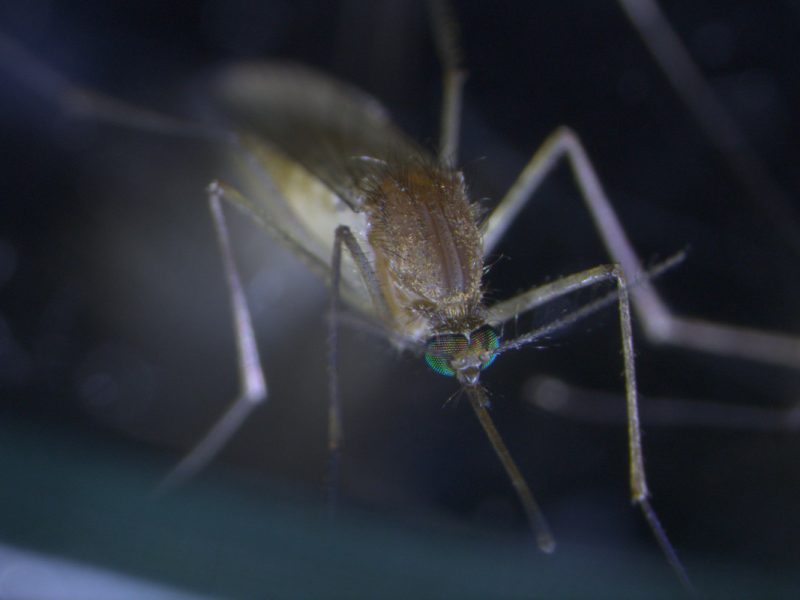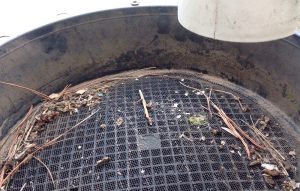Egg-laying mosquitoes have been found in more than 20% of domestic rainwater tanks inspected in Melbourne homes. What can we do to keep them out?

macro photo of a mosquito
Egg-laying mosquitoes have been found in more than 20 per cent of domestic rainwater tanks inspected in Melbourne homes. What can we do to keep them out?
As recently as the mid-1960s, domestic rainwater tanks were discouraged or even banned by some local councils in Australia because of concerns about environmental risks such as mosquito breeding. Between 1897 and 1955, Brisbane had 7 dengue outbreaks, and mosquitoes breeding in rainwater tanks were regularly found to be the cause. By the 1990s, almost no rainwater tanks remained in most of Australia’s urban areas.
How times have changed. Now, thanks to severe drought and the prospect of a drier future, and spurred on by subsidies and regulation, at least 30 per cent of homes in Brisbane, Melbourne, Adelaide and Sydney now have a rainwater tank installed.
But with the proliferation of tanks in our cities comes an increased risk of outbreaks of mosquito-borne diseases. And now, unlike in the early part of the last century, tanks are not being regularly checked for breeding mosquitos.
During 2013–14, we inspected rainwater harvesting systems in 417 Melbourne homes. The results gave us a shock—we found mosquitoes breeding in 21 per cent of them.
Public health warning flag or time bomb?
The fact that 21 per cent of tanks were infected with mosquitoes is a serious concern for Melbourne health officials and a warning flag for other capital cities.
To put the figure in context, the Queensland Government previously stated that its acceptable threshold is 1 per cent because of the risk of a dengue outbreak.
Dengue is currently confined to Queensland but, as the global climate continues to warm, it could become a problem further south.
Unsealed overflows the biggest culprit
The most common access routes for mosquitoes were found to be the tank inlet and the tank overflow, either because there was no mosquito mesh covering the opening or the mesh was damaged.
Unmeshed overflows were the biggest culprit, representing about 60 per cent of the mosquito-infected systems. This was despite good meshing of the inlet.

Water tank with damaged mesh
Damaged mesh is as good as no mesh at all.
In about 22 per cent of cases, the mesh on the inlet was in poor condition and this allowed the entry of mosquitoes to nearly the same extent as having no meshing at all.
Even with adequate mosquito meshing on both the inlet and the overflow, 5 per cent of tanks still had mosquitoes breeding in them.
How the mosquitoes are gaining entry to these tanks requires more detective work. There could be a hole in the mesh, or perhaps the mesh is not sitting properly.
Wet systems are more of a risk and harder to check. In a wet system, pipes from the gutter run down the wall, under the ground, and up into the tank. The pipes can hold stagnant water that could become a habitat for breeding mosquitoes.
Blocked gutters can also cause water to pond, providing a breeding site for mosquitoes, with the eggs being washed into the tank.
5 tips for keeping mosquitoes from breeding in and around your tank
- Seal both the inlet and the overflow with proper mosquito mesh, which is available from any hardware store.
- Poor meshing is as bad as no meshing, so check it regularly and replace the mesh if it is damaged or not well fitted.
- If your overflow water pools on an open grassy area, this can be a breeding ground for mosquitoes. Ideally, your overflow water should be diverted to a covered drain.
- Clean your gutters. Mosquitoes can breed in small pools of water that form in a blocked gutter. The eggs can then be washed into the tank.
- Be vigilant. Inspect your whole system regularly.
Want to learn more? Read the full article on this research in ECOS.


Pingback: Keep Mosquitoes Away from Your Rainwater Tank | Rapid Plas
23rd December 2016 at 5:08 pm
Compare and contrast Melbourne (the entire State of Victoria, for that matter) with rain water harvesting in Thailand (including Bangkok): I wonder why it’s successfully done in Thailand.
25th November 2016 at 6:21 pm
I think the CSIRO should continue to study, examine, conduct tests, trials and studies as it has always done.
25th November 2016 at 12:18 pm
Some interesting claims in this Blog. There has never been any credible or proven scientific link between Dengue outbreaks and rainwater tanks aside from the speculation of certain state government health officials and circular reference to those claims. These facts emerged from our forenzic investigation of these issues and responses from health officials. If their speculation was true, Dengue outbreaks should have been Australia wide because rainwater tanks are located throughout Australia. The speculation that Dengue outbreak only happen in urban areas is also unlikely. And it seems these claims ignored the far more favorable locations of the mosquito that might be the Dengue vector, including pot plants, drains, ponds, bird baths, puddles etc etc that are ubiquitous throughout Australia. Simply put real rainwater tanks do not usually contain warm shallow stagnant water and stored rainwater has a low nutrient content – thus the risk of mosquitoes is far less than most other water bodies.
In the 1990s, Australia included a large number of rainwater tanks and the number of rainwater harvesting systems has increased dramatically since – and there are no epidemics of rainwater related illness. However, regardless of the speculation, all modern rainwater harvesting systems are mosquito proof mesh on the inlets and outlets of the tanks – as provided by the rainwater industry and required by regulation. I understand that this research was funded and managed by Victorian water utilities in 2013-14.
It is agreed that all water sources should be installed and operated correctly. And there will always be issues to resolve with all water sources from time to time. A balanced position on this is any risks from mosquitoes should be managed in all water bodies in a manner that is consistent with real risks. Thus this article serves to focus some discussion on the issue. Rainwater provides other 12% of Australian residential water supply
25th November 2016 at 10:44 pm
I remember as a child my Dad used to pour kerosene on top of the tank water which formed a skin which drowned the wrigglers as they could not break the barrier to breath.
An old remedy that worked. I grew up in the Sunraysia where Murray Valley Encephalitis would raise its ugly head quite regularly and frighten all the tourists away.
23rd November 2016 at 4:57 pm
Great to see a piece on rainwater harvesting, something of particular interest to one in four households in Australia. Fortunately, since the bad old 1960s, we have designed simple and effective ways to manage mosquitoes in rainwater tanks. It sounds like four out of five rainwater harvesting households in Melbourne are managing mosquitoes perfectly and with a little help, including your useful article, it could be 100%. The Rainwater Harvesting Association does recommend mosquito management on all rainwater harvesting systems and we keep promoting rainwater harvesting maintenance through our series of blogs and web pages.
Rainwater Harvesting is one of the smart things we do in Australia, it is an innovative use of a renewable resource and it has the potential to employ a lot of local people, save billions in water infrastructure and improve urban stormwater management. Isnt that the kind of thing the CSIRO is looking for?
My interest is working for the Rainwater Harvesting Association of Australia. Thanks for the article.